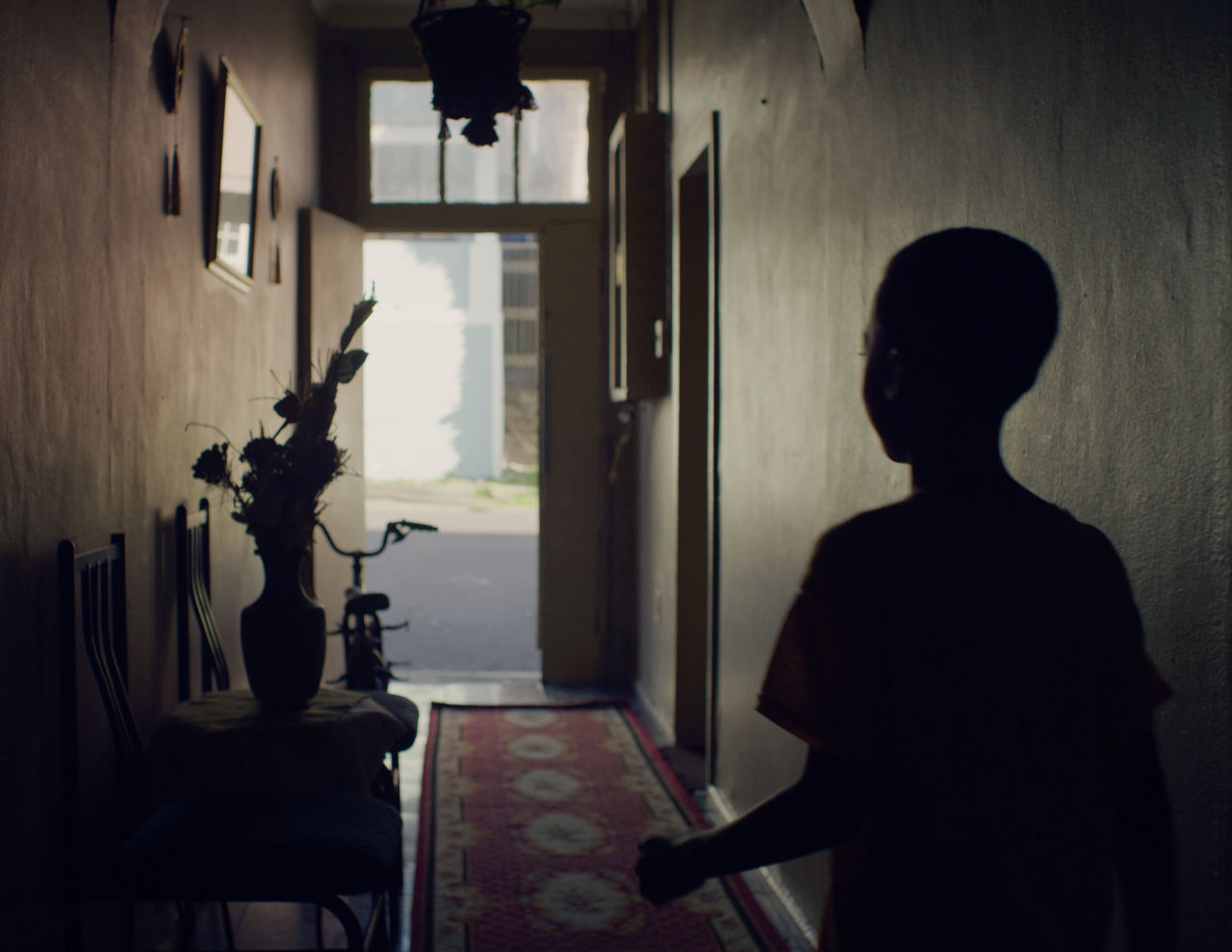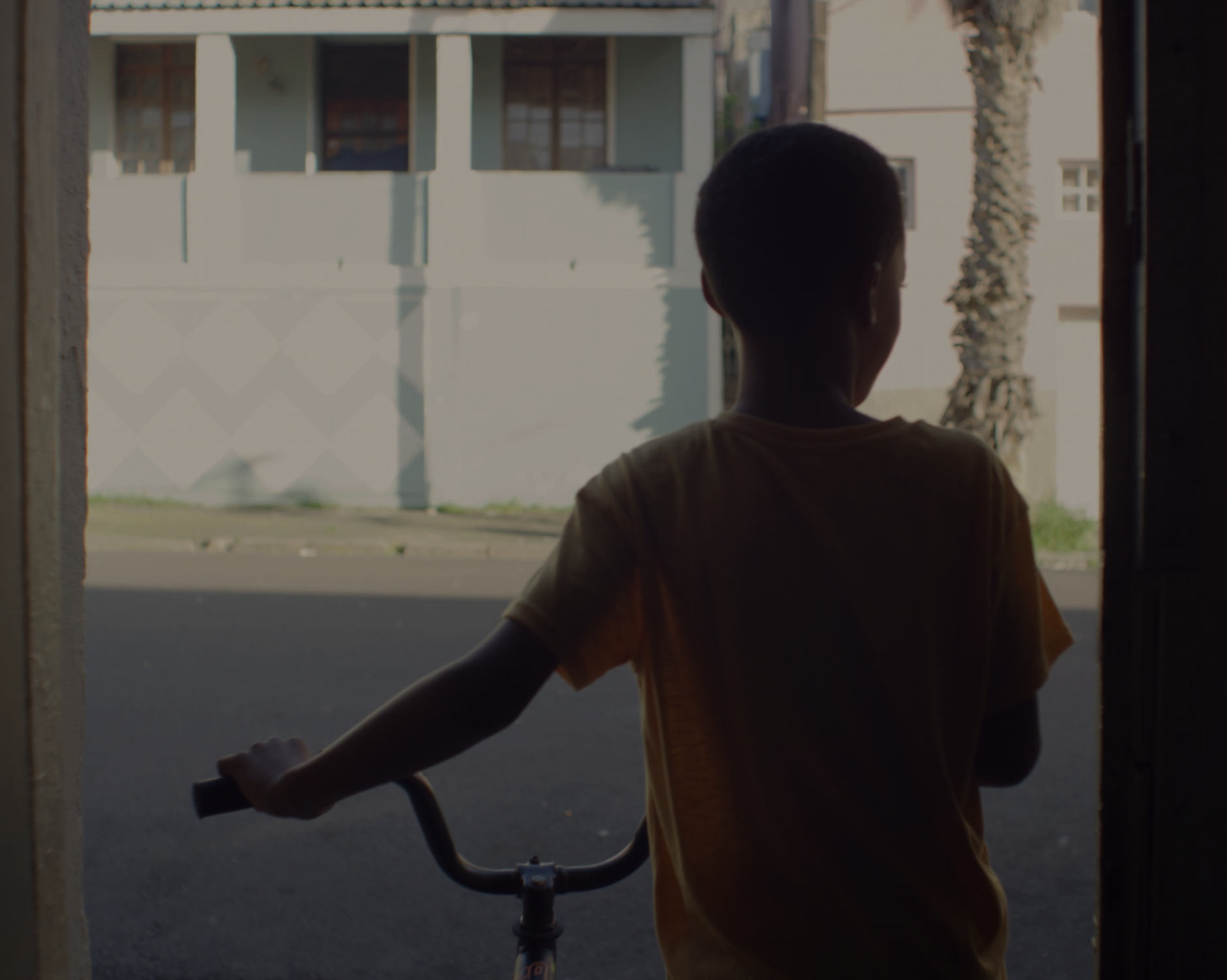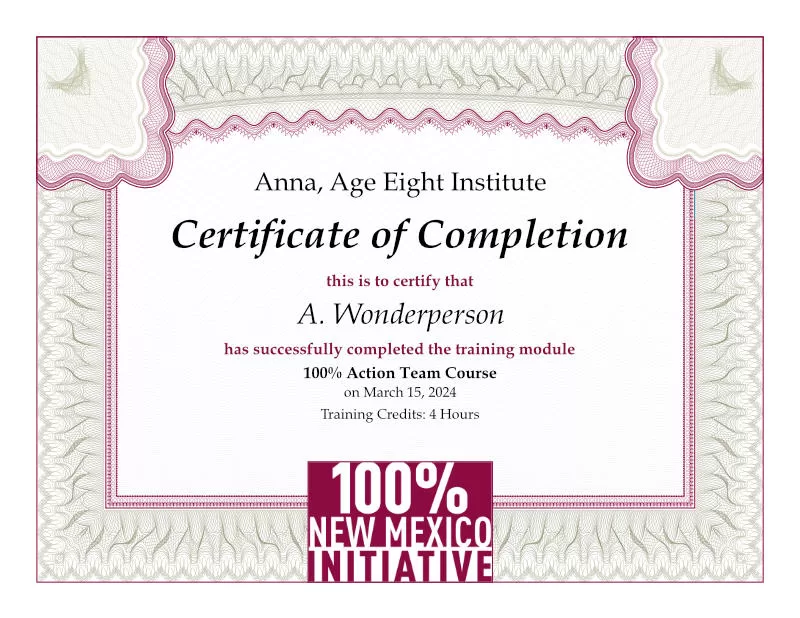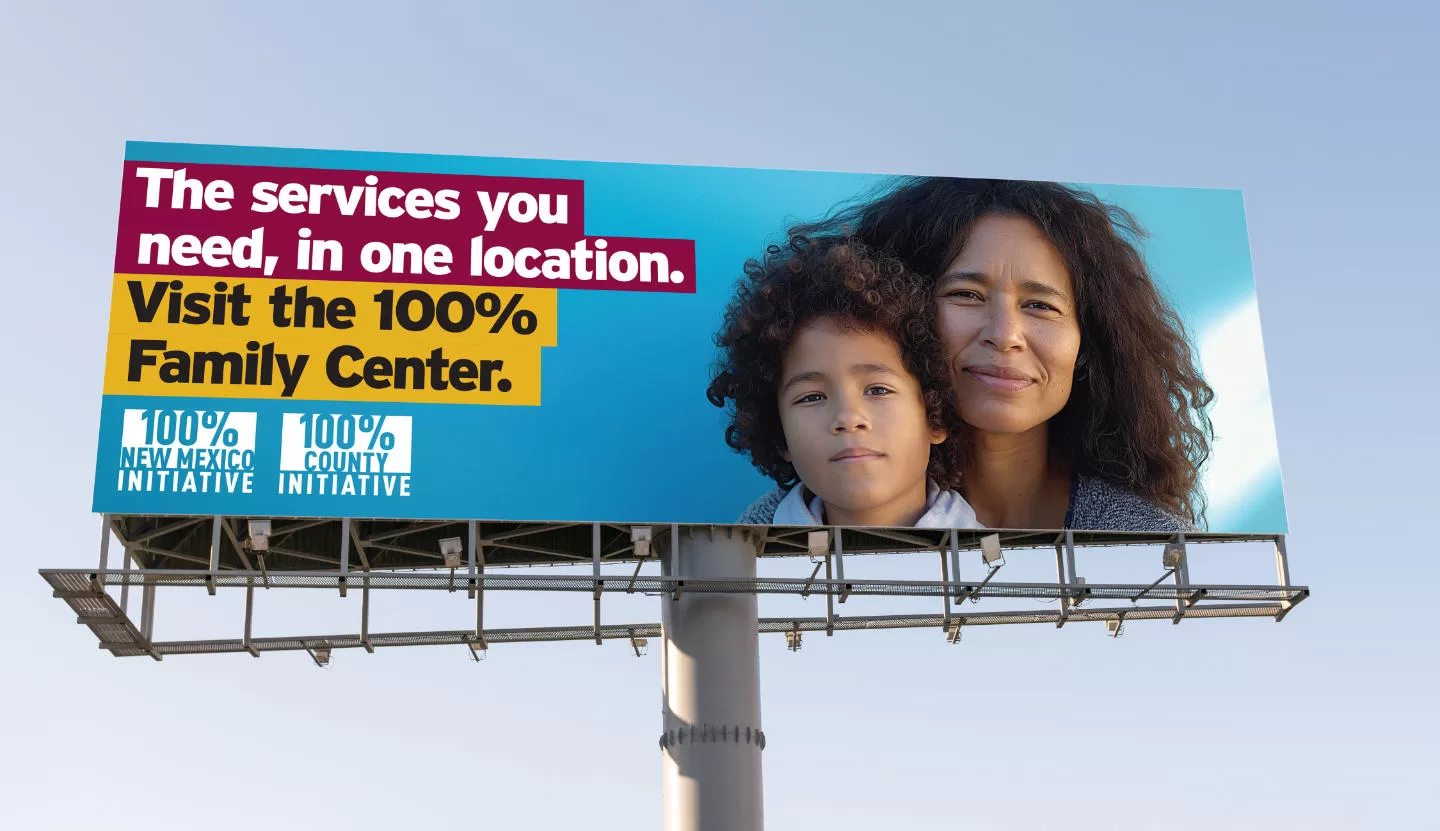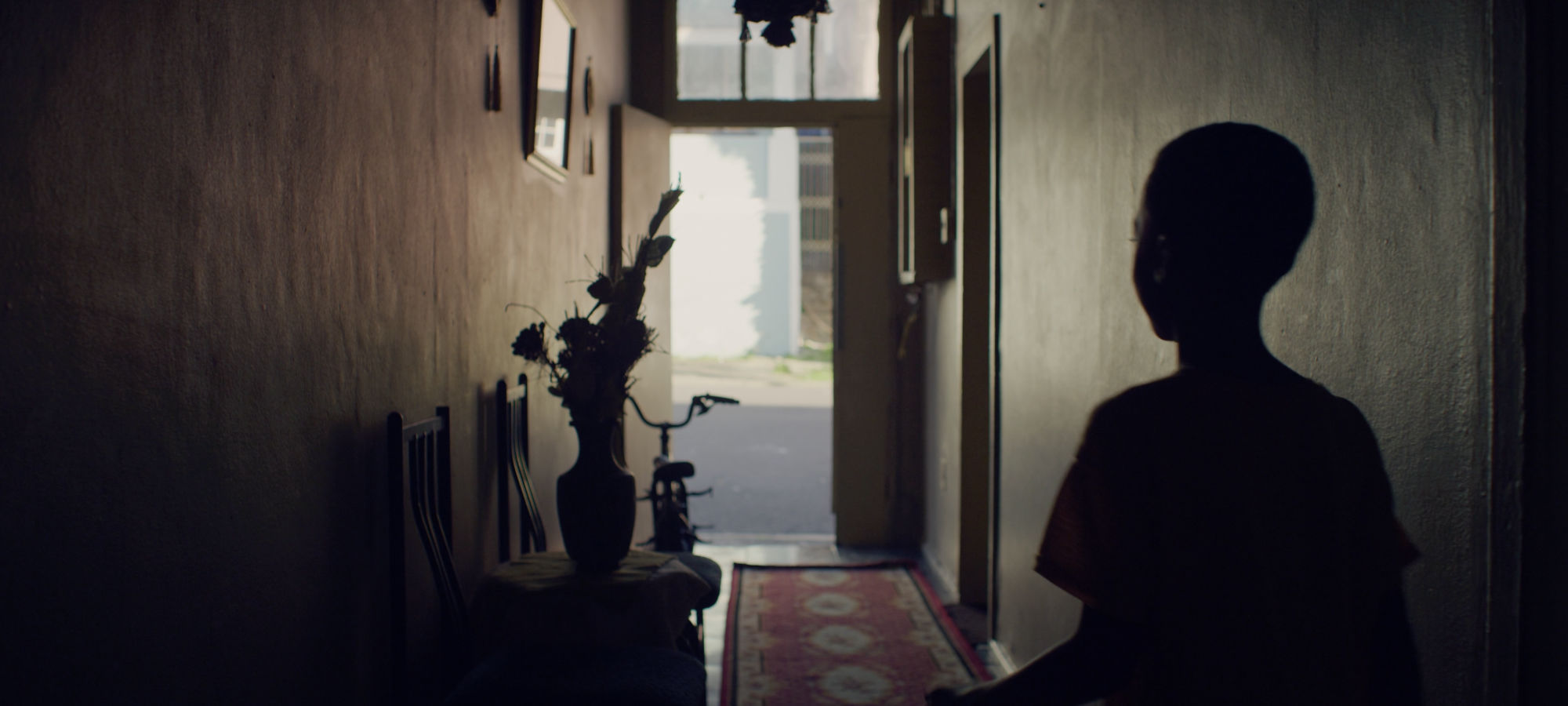
We’re preventing the costly and far-reaching consequences of adverse childhood experiences.
It’s an urgent call to action. With research showing child maltreatment is substantiated for one in eight children in the US and one in four adults in New Mexico reports four or more adverse childhood experiences (ACEs), it is clear that ACEs, a broader category of experiences than maltreatment identified by child welfare, are at an epidemic scale in our society. For decades, we have allowed the adversity and abuse that lead to emotional trauma and substance use disorders to harm our families, schools, and workforces with little organized and sustained public outcry. The 100% New Mexico initiative ends the silence, replacing it with action.
Addressing trauma that does not end in childhood
The Anna, Age Eight Institute was established in 2019 with funding from the New Mexico state legislature to develop the data-driven prevention of adverse childhood experiences that lead to ACEs-related trauma, substance use disorders, and diminish our student’s capacity to learn and adults’ capacity to be job ready. The Institute takes a systems approach to prevention and treatment as we work in each county with the local 100% New Mexico initiative to build the ten vital services that ensure trauma-free childhoods within well-resourced households, schools, and communities. Our health promotion work focuses on expanding vital services through the 100% Family Center: One Stop Service Hub and community schools with health centers. The institute’s ACEs prevention strategies are informed by decades of research on ACEs, trauma, social determinants of health, and child welfare reform.

ACEs is a root cause of almost every costly challenge we face.
ACEs were first identified in the 1998 Adverse Childhood Experiences Study by Dr. Filetti and team, illustrating the impact of ten forms of adversity on children’s emotional and physical health, impacting their learning capacity. Children are at risk for various reasons, including being raised by adults who also endured ACEs and live with untreated trauma and, in some cases, substance use disorders.
Not only do our infants, children, and youth endure adversity in the home, but live in vastly under-resourced communities, lacking easy access to medical and mental health care, along with other vital services for surviving and thriving. This lack of services is described as the adverse social determinants of health, which means that families lack the services that determine their health, safety, education, and overall quality of life. It has been established that services such as behavioral health care are critical in preventing ACEs and treating ACEs-related trauma.
Viewed together, adverse childhood experiences and the adverse social determinants of health represent the root causes of almost every costly public health and education challenge we face in the US.
We must understand the cost and complexity of ACEs.
The problem with starting with a list of ACEs is that it neatly packages ten horrific experiences into ten bullet points. Our minds are not designed to take in the magnitude of the challenges and pain represented by ten adverse childhood experiences. As a thought experiment, read the following list of ACEs:
Physical abuse, emotional abuse, sexual abuse, physical neglect, emotional neglect, living in households where adults have substance use disorders, engage in domestic violence, have untreated mental health challenges, parents are divorced or separated, or a family member is incarcerated.
How do the 40 words impact you? It is difficult to take in their magnitude, yet they need to motivate our leaders to take substantive, systematic, and sustainable action.
Adverse childhood experiences have short-term, long-term, and life-long effects.
One of the biggest challenges in preventing adverse childhood experiences (ACEs) is that they represent the ten different adult behaviors impacting children and teens listed above. Each ACE may have its own root causes, impact, prevention, and treatment efforts. We will benefit from looking at each ACE to design a data-driven strategy to prevent and treat ACEs.
Physical Abuse is part of many children’s lives.
In the context of ACEs, the term physical abuse can be defined as any intentional act by a parent or household member causing injury or trauma to a child or youth in the home by way of bodily harm. Other terms sometimes used include physical assault or physical violence. Like all ACEs, physical abuse is a very complex issue involving child development, family functioning, parents’ mental health, and the home and community environments children are raised. Treatment requires a well-resourced community with access to healthcare.
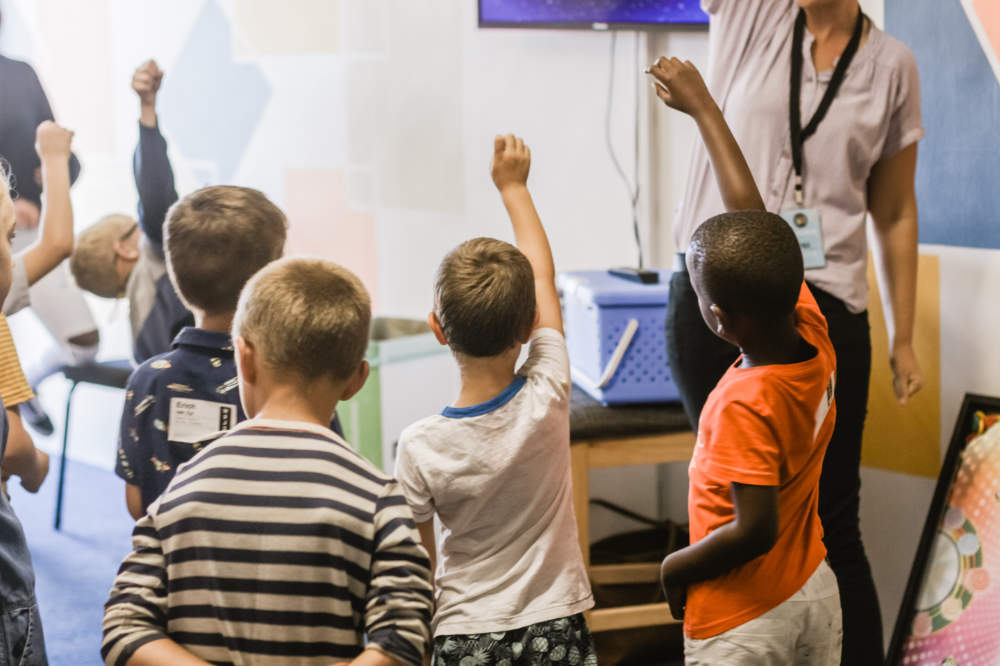
ACEs, Trauma and our Children
ACEs impact many of our children. Instead of growing up with joy they endure emotional trauma year after year. Most ACEs fly under the radar of child welfare and schools. Instead of learning and socializing at school, in some classrooms a third to three-quarters of students may have three or more ACEs. They may be marginalized at school, perceived by teachers as being disengaged or acting out. Students may worry more about what adversity awaits them at home instead of doing math homework. Click above to learn their stories.*
*fictional stories
The emotional abuse of children is far from uncommon.
The ACE Study defines emotional abuse as a parent or other adult in the household often insulting, humiliating, or swearing at a child. It can also mean an adult household member acting in a way that makes children afraid they might be physically hurt. Presenting and treating emotional abuse requires that each community have access to timely behavioral health care, with counselors familiar with trauma-informed care with individuals and all family members.
The sexual abuse of children can have a lifelong impact.
Child sexual abuse, within the context of ACEs, is a form of abuse in which an adult or older household member uses a child for sexual stimulation or gratification. Forms of child sexual abuse include but are not limited to adults engaging in sexual activities with a child (whether by asking or pressuring or by other means), grooming a child for sexual activity, indecent exposure, or using a child to produce pornography.
Sexual abuse can impact children, youth, and adults for many years, impacting their capacity to form emotional attachments and healthy relationships. Access to behavioral healthcare, notably counselors with expertise in addressing sexual abuse, will be critical for every community across all socio-economic levels.
Physical neglect is a common form of maltreatment seen by child welfare.
In the context of ACEs, physical neglect is when a parent or caregiver doesn’t provide the basic care that a child needs to survive and thrive. This includes meeting basic physical needs like food, clothing, shelter, and access to medical and dental care. We have heard child welfare staff say, “It’s not a crime to be poor.” Unfortunately, in economic downturns, parents can endure unemployment and underemployment, resulting in a lack of access to the services for survival. This can result in child protective services removing a child from a parent’s home if vital care is not provided.

Untreated Trauma on Campus
Students arrive to college or university with untreated trauma due to ACEs. Lack of academic achievement and low graduation rates can be the result of untreated trauma and the lack of accessible behavioral health care on campus. Click above to learn their stories.*
*fictional stories
Emotional neglect can harm a child in many ways.
Childhood emotional neglect, within the context of ACEs, occurs when parents fail to respond to their children’s emotional needs. Emotional neglect is different from emotional abuse in that emotional abuse is a purposeful choice to be harmful. Emotional neglect might be apathy or intentional disregard for a child’s feelings or failure to notice a child’s emotional needs. Parents and other adult household members who emotionally neglect children may still provide services for surviving, but little else. As with all forms of abuse, addressing emotional neglect within families requires behavioral health care designed to treat the entire household.
Growing up with a parent or other adult household member with mental health challenges is an ACE.
When a parent becomes mentally unwell, it can be difficult for the child to make sense of their parent’s behavior, resulting in confusion, sadness, and fear. Mental health challenges fall along a continuum. Some may be mild or short-lived problems, often the result of a particular situation that can be resolved with support. There can also be severe and enduring mental illnesses, including schizophrenia, personality disorders, and bipolar disorder. Timely access to behavioral healthcare, medical care, and other support services may be required to address various forms of untreated mental health challenges among household members.
A common ACE involves children growing up in a home with a parent or other adult household member with a substance use disorder.
Growing up around adults with substance use disorders can be traumatizing, confusing, and destabilizing. Children from homes where parents are addicted to drugs or alcohol are likelier to start using drugs earlier in their lives. Patterns of addiction and self-medication to cope with stresses may be passed from adult to child. With substance use disorders can come adult behaviors that may frighten a child or teen. Longer traumatic effects can result from a child navigating a home where substance-related behaviors occur, including injury, violence, illness, and fatalities. Medical and mental healthcare will be required to address substance use disorders and prevent substance use-related violence, injury, illness, and fatalities.

Untreated Trauma in the Workplace
Trauma, a result of ACEs, can impact an employee’s work performance and behaviors. Substance misuse and mental health challenges may result from untreated trauma and impact workforce productivity..*
*fictional stories
An ACE is living in a household where the parent and partners are engaged in domestic violence.
In many cases of domestic violence, children will view the abusive behavior firsthand. Children and teens who witness domestic violence may be more vulnerable to various physical and health challenges as they grow older. Domestic violence can be terrifying and deeply troubling to a child depending on the volatile nature of the altercations between adults. There are “failure to protect” laws in child welfare programs across the United States. Domestic violence can sometimes constitute a form of abuse that allows child welfare to take custody of children. Most domestic violence and ACEs fly under the radar of government officials, including the school community. Students suffer in silence, thinking more about the dangers that await them at home than focusing on school homework.
Divorce and separation are ACEs for many reasons.
Parents separating can be a pivotal experience for children, with negative emotional and financial consequences. From a child’s perspective, divorcing can mean years of fighting and threats between parents. Divorce and the behaviors leading up to it can cause a range of emotional responses, including anger, frustration, anxiety, fear, and sadness. Divorce represents a loss of stability and can, in some situations, move a once well-resourced child into poverty. Addressing divorce, which results in economic insecurity, requires each community to provide timely access to all ten vital services for surviving and thriving.
A child having a parent or household member incarcerated is an ACE.
There may be emotional consequences due to the disrupted family life caused by incarceration. There is also the social stigma that children may feel due to having a parent incarcerated. Added to many changes due to a single parent being incarcerated is that children may find themselves in foster care. Children who view the arrest of a parent, especially if it involves a volatile encounter with law enforcement, may find it traumatizing. Incarceration of a parent can mean loss of household income, impacting the family’s economic stability. Localities that ensure families live in environments that represent the positive social determinants of health are the best way to support the families of the incarcerated.
We don’t lack research to guide prevention.
Thousands of research articles are focused on specific ACEs, primarily from peer-reviewed journals. They can provide ongoing professional development, research, analysis of best practices, and promotion of community dialogue and attention focused on educating all providers and residents about ACEs’ emotional and financial costs. It is worth noting that while ACEs exist in rural and urban environments and among all socioeconomic groups, local public acknowledgment of the magnitude of ACEs may differ based on community norms. One of the biggest challenges in addressing ACEs is that they have been viewed up until now as an individual family problem instead of a systemwide community problem leading to costly public health and education challenges.
We have two strategies to prevent ACEs and treat ACE-related trauma.
The collision of ACEs and the adverse SDOH mean that the support services to address ACEs and ACEs-related trauma are out of reach to many families across New Mexico. To remedy this, we are promoting the development of 100% Family Center: One Stop Service Hubs with ten services under one roof. Services are made available on-site, online, or through navigators. We also promote community schools with health centers to expand vital services for surviving and thriving with students and their families. As you can see, preventing ACEs requires a strategy to prevent adverse SDOH.
We’re taking local and state action.
Enroll in our course A Child’s Right to Survive and Thriving to explore the root causes of ACEs and the impact of trauma on children, students, out-of-school youth, parents, and caregiving grandparents. Learn how ACEs impact schools, communities, and workplaces and how the 100% New Mexico initiative is leading prevention efforts nationwide. You can also download free of charge the book Anna, Age Eight: The data-driven prevention of childhood trauma and maltreatment by Dr. Katherine Ortega Courtney and Dominic Cappello.
Explore the research focused on ACEs.
The following research articles and resources can serve as a starting point for understanding strategies by exploring a host of topics, including long-term health consequences1, maltreatment risk as a function of poverty and race/ethnicity2, consequences of neglect in emerging adults3, abuse and children with disabilities4, the dilemma mandatory reporting poses for teachers5, the economic burden of maltreatment6, lifelong effects7, ACEs and adult depression8, ACEs and chronic disease in adulthood9, ACEs and juvenile offenders10, ACEs and rurality11, The ACEs Study12, a critical assessment of the ACEs study at twenty years13, and the social determinants of health and ACEs14.
Did you know? Our transformational 100% New Mexico initiative is guided by web-based, self-paced courses provided free to all New Mexicans.
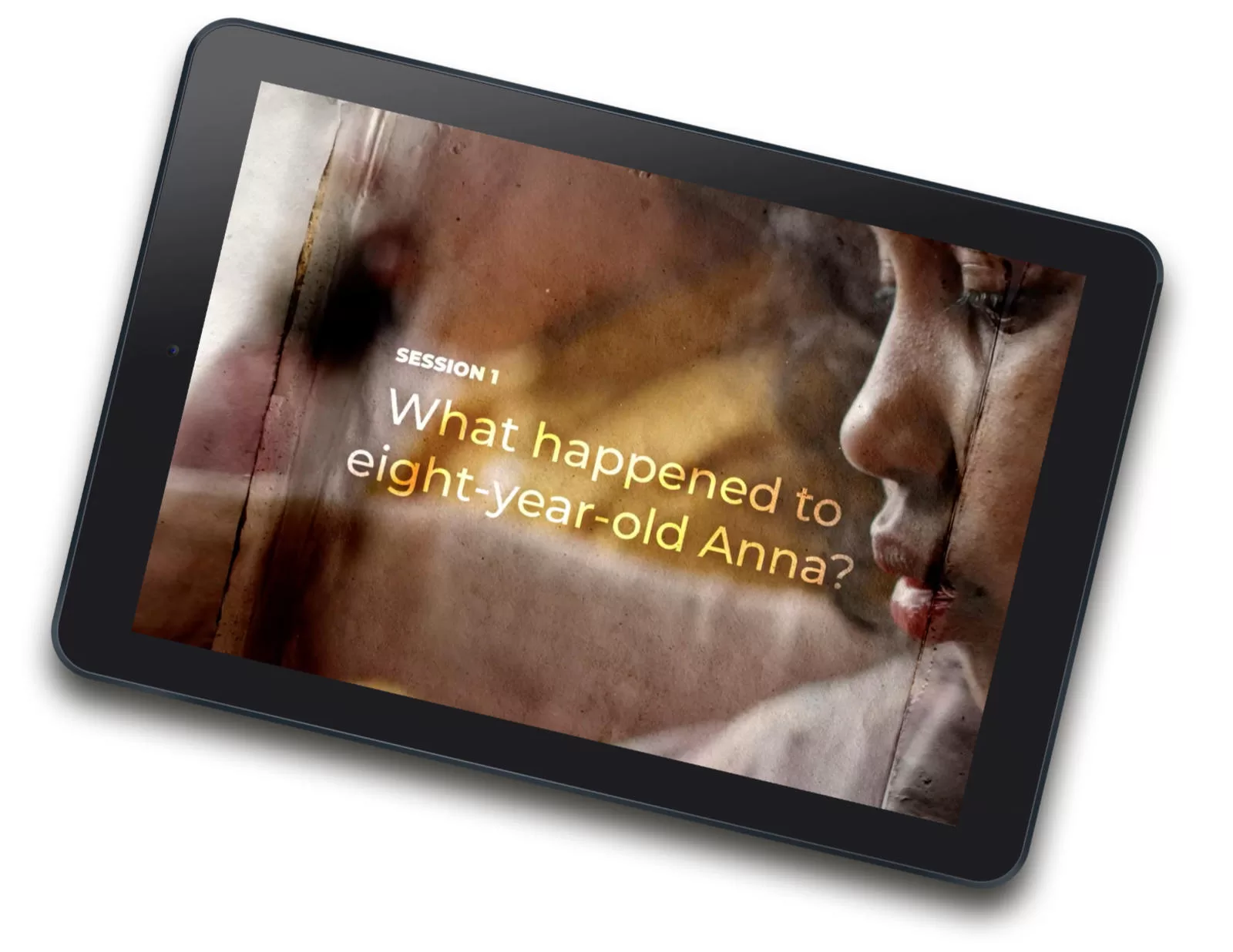
Footnotes
- Norman, R. E., Byambaa, M., De, R., Butchart, A., Scott, J., & Vos, T. (2012). The long-term health consequences of child physical abuse, emotional abuse, and neglect: A systematic review and meta-analysis. PLoS Medicine, 9(11). https://doi.org/10.1371/journal.pmed.1001349
- Kim, H., & Drake, B. (2018). Child maltreatment risk as a function of poverty and race/ethnicity in the USA. International Journal of Epidemiology, 47(3), 780–787. https://doi.org/10.1093/ije/dyx280
- Cohen, J. R., Menon, S. V., Shorey, R. C., Le, V. D., & Temple, J. R. (2017). The distal consequences of physical and emotional neglect in emerging adults: A person-centered, multi-wave, longitudinal study. Child Abuse & Neglect, 63, 151–161. https://doi.org/10.1016/j.chiabu.2016.11.030
- Corr, C., & Santos, R. M. (2017). Abuse and young children with disabilities. Journal of Early Intervention, 39(1), 3–17. https://doi.org/10.1177/1053815116677823
- Falkiner, M., Thomson, D., Guadagno, B., & Day, A. (2017). Heads you win, tails I lose: The dilemma mandatory reporting poses for teachers. Australian Journal of Teacher Education, 42(9), 93–110. https://doi.org/10.14221/ajte.2017v42n9.6
- Fang, X., Brown, D. S., Florence, C. S., & Mercy, J. A. (2012). The economic burden of child maltreatment in the United States and implications for prevention. Child Abuse & Neglect, 36(2), 156–165. https://doi.org/10.1016/j.chiabu.2011.10.006
- Shonkoff, J. P., & Garner, A. S. (2013). The lifelong effects of early childhood adversity and toxic stress (technical report). Pediatric Clinical Practice Guidelines & Policies, 922–922. https://doi.org/10.1542/9781581108224-the19_sub01
- Chapman, D. P., Whitfield, C. L., Felitti, V. J., Dube, S. R., Edwards, V. J., & Anda, R. F. (2004). Adverse childhood experiences and the risk of depressive disorders in adulthood. Journal of Affective Disorders, 82(2), 217–225. https://doi.org/10.1016/j.jad.2003.12.013
- Holter, J., Marchionni, C., & Bhatt, B. (2021). The relationship of adulthood chronic disease and adverse childhood experiences (ACES): Implications regarding prevention and promotion in international health. Contemporary Developments and Perspectives in International Health Security – Volume 1. https://doi.org/10.5772/intechopen.93520
- Baglivio, M. T., & Epps, N. (2015). The interrelatedness of adverse childhood experiences among high-risk juvenile offenders. Youth Violence and Juvenile Justice, 14(3), 179–198. https://doi.org/10.1177/1541204014566286
- Crouch, E., Radcliff, E., Probst, J. C., Bennett, K. J., & McKinney, S. H. (2019). Rural‐urban differences in adverse childhood experiences across a national sample of children. The Journal of Rural Health, 36(1), 55–64. https://doi.org/10.1111/jrh.12366
- Felitti, V. J., Anda, R. F., Nordenberg, D., Williamson, D. F., Spitz, A. M., Edwards, V., Koss, M. P., & Marks, J. S. (1998). Relationship of childhood abuse and household dysfunction to many of the leading causes of death in adults. American Journal of Preventive Medicine, 14(4), 245–258. https://doi.org/10.1016/s0749-3797(98)00017-8
- McEwen, C. A., & Gregerson, S. F. (2019). A critical assessment of the adverse childhood experiences study at 20 Years. American Journal of Preventive Medicine, 56(6), 790–794. https://doi.org/10.1016/j.amepre.2018.10.016
- Kapp, J., Frech, A., Hall, B., & Kemner, A. (2020). Social Determinants of Health, adverse childhood experiences, and maternal-infant relationship. European Journal of Public Health, 30(Supplement_5). https://doi.org/10.1093/eurpub/ckaa166.315

